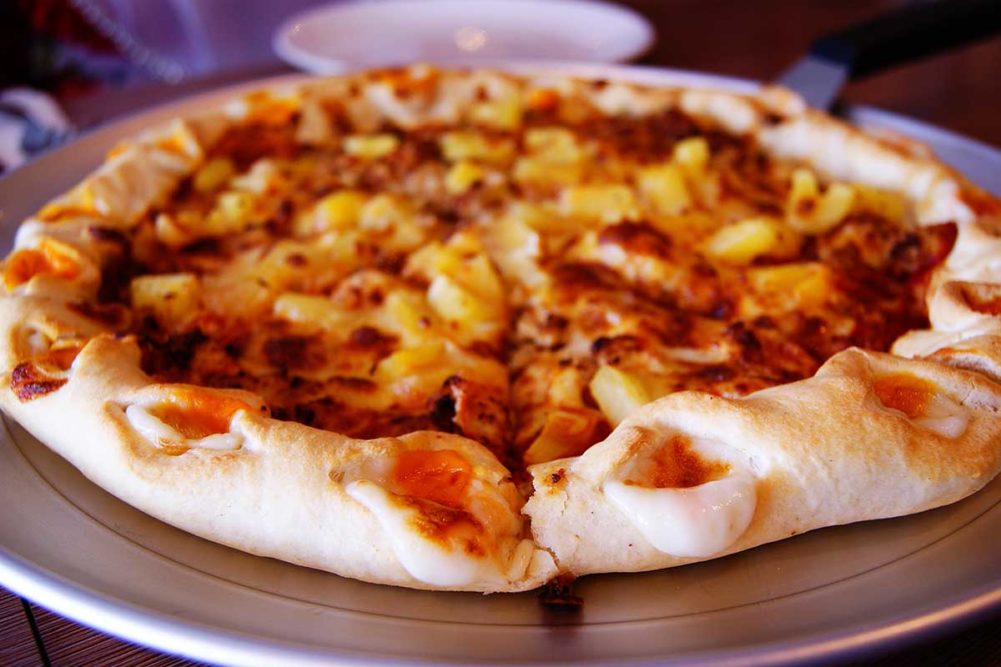Pizza is a comfort classic loved by just about everyone, but there’s still plenty of innovation to keep consumers interested, including outside-the-box flavors and a growing variety of crusts.
“Consumers are requesting more choices in the type of pizza base and variety of toppings,” noted Randy Kelly, Fritsch USA, a Multivac company. “There’s also more demand for alternative pizza bases such as alternative proteins, low carb and vegan options.”
While the proliferation of new pies may be a pizza lover’s dream, it can be a nightmare for manufacturers that have to handle more delicate crusts, toppings and more. The challenges of these ingredients require pizzamakers to fully grasp the product they’re making, as well as the equipment needed to create a pizza that meets consumer expectations.
Better-for-you (BFY) crusts are booming in the pizza category. Gluten-free crusts are expected to expand 27% on menus over the next four years, according to Datassential, and cauliflower crusts have quickly grown to become the preferred crust of 12% of consumers, Technomic found.
These healthier alternatives can cause headaches for pizzamakers compared to traditional doughs, however.
“We’re starting to see a lot of alternative crusts like cauliflower and gluten-free, and this is the biggest change in the category because a lot of these crusts can’t be handled with standard bakery equipment,” explained Ken Hagedorn, vice president, bakery sector, Handtmann. “A lot of people are looking for different means of dough dividing that can handle these stickier, fluid doughs.”
For gluten-free and other BFY doughs, a gentle process is key. Handtmann’s vane cell pump systems are well-suited for doughs of various consistencies. The dough goes through a shorter travel path before depositing, Mr. Hagedorn said, which reduces stress on the product.
“It’s a very gentle and accurate system, especially when it comes to gluten-free,” he said. “Gluten-free ingredients aren’t cheap, so weight control becomes a priority.”
This system also doesn’t require dusting flour, another obstacle bakers face when making gluten-free pizzas.
GEA Bakery has also tackled this issue by developing a lubrication system of the mechanical parts that come in contact with the dough, allowing for gentler handling.
“Furthermore, our gluten-free production line is fully wash-down; installed on a separate environment and completely isolated from the rest of the production lines to avoid any risk of contamination,” said Paolo Berlaffa, application manager, GEA.
Traditional sheeting lines are also advancing to better handle BFY doughs.
“Our philosophy when designing machines and systems is very simple: The machine must adapt to the dough and not the dough to the machine,” Mr. Kelly said.
Fritsch’s Impressa line accomplishes this through its SoftProcessing principle that gently sheets the dough. A dough band is formed using a 5-roller dough sheet former, and then a satellite head and cross roller ensure the band is calibrated to the desired dough thickness.
Sheeting lines are also eliminating the need for certain processing ingredients to simplify production and meet new crust standards. Rondo’s MIDOS dough band former offers a specially developed roller system that doesn’t require any process flour or oil, for example.
And Rademaker’s Pizza Base line sheets dough without oil or pans and has a working width of 600 to 1,600 mm. The line’s no-stress sheeting and laminating technology enables bakers to achieve a wide variety of dough structures.
A dough ball system can accommodate trickier doughs as well. Gemini Bakery Equipment has developed a high-speed rounder/divider to produce pizza dough balls from 4 to 18 ounces for a variety of speeds and weights. To accommodate unique dough types, different proof times are applied to the dough ball before final processing.
“Gluten-free and veggie-based crusts are by nature challenging to produce particularly when the production rate demands are high,” noted Jerry Murphy, vice president of sales, Gemini. “This requires specialized equipment with the need to do extensive testing.”
BFY crusts have taken off, but there’s plenty of demand for more indulgent crusts as well. Stuffed crust remains a big opportunity for pizzamakers, with Datassential reporting that 56% of consumers are interested in the crust while only 19% of pizza-serving operators offer it.
To make these stuffed crusts, an extra-large dough portion is die cut or pressed before a ring of cheese is deposited, Mr. Hagedorn explained. The extra dough is then wrapped around the cheese down the line before baking.
“The difficult thing is the cheese, because most mozzarella you have to handle at less than 40 degrees,” he warned. “If you do it too soft, you tend to have a meltdown problem when you bake it. So the less pressure you can use, the less temperature involved, you’re less likely to have leakage.”
Stuffed crusts can even feature a full layer of cheese throughout the entire pizza, such as Arlington, Va.-based Nestle USA’s DiGiorno Fully Stuffed Crust Pizza, which debuted earlier this year.
Producing a fully stuffed crust is similar to laminating, Mr. Hagedorn said, as an additional full layer of dough is placed on top of the full layer of cheese. Croissant crusts are another innovative option that DiGiorno added to the category this year but would require a completely different processing line, Mr. Hagedorn noted.
“When you get to a croissant crust it becomes a laminating line, almost like you’re producing a Danish,” he said. “You likely will have to layer dough and fat and then laminate, and your sheeting line becomes more expensive.”
This article is an excerpt from the November 2022 issue of Baking & Snack. To read the entire feature on Pizza Processing, click here.




